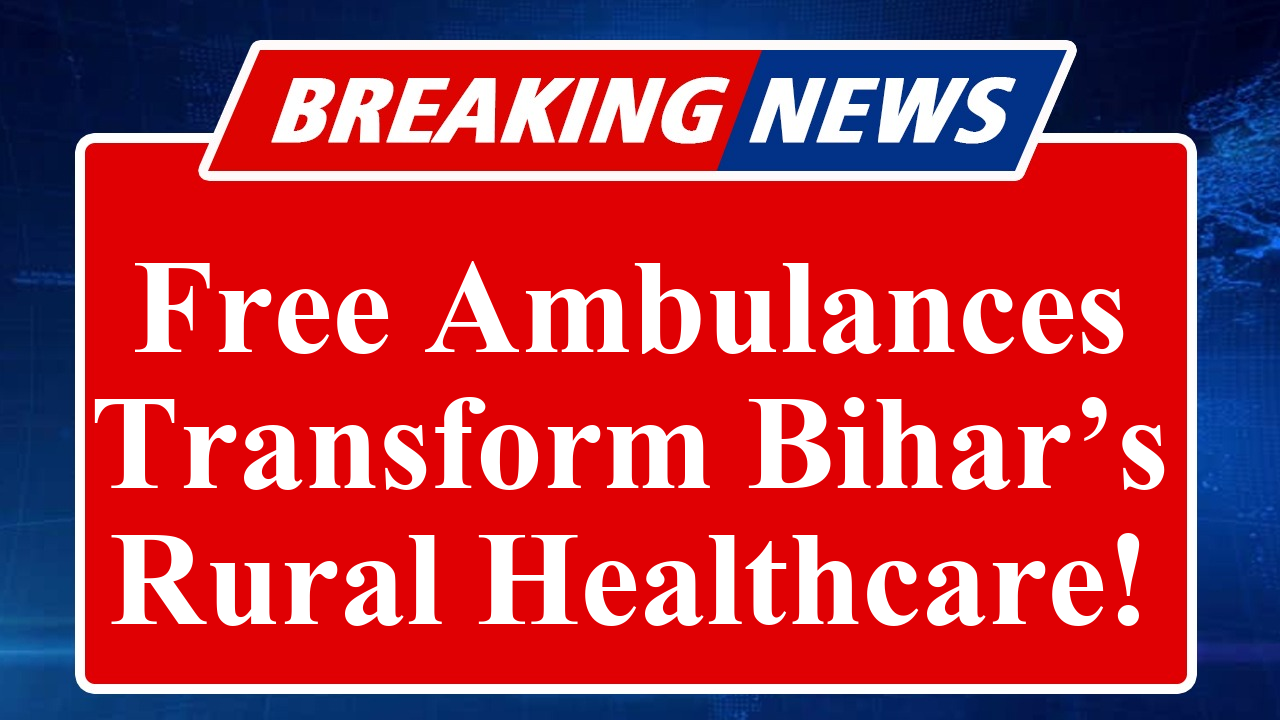“On June 22, 2025, Bihar launched a transformative initiative to provide free ambulance services across its villages, aiming to bridge healthcare gaps in rural areas. The scheme, under the National Health Mission, ensures timely medical transport for all patients, enhancing access to government hospitals. This move addresses critical healthcare shortages, promising improved emergency care and reduced mortality rates in underserved regions.”
Bihar Rolls Out Free Ambulance Services for Rural Healthcare
On June 22, 2025, the Bihar government unveiled a landmark initiative to provide free ambulance services to all villages under the National Health Mission (NHM). This scheme expands the existing “102” ambulance service, previously limited to specific patient categories like pregnant women and infants, to now cover all types of patients requiring urgent medical transport to government hospitals. The initiative aims to address the state’s long-standing healthcare access challenges, particularly in rural areas where infrastructure remains inadequate.
The State Health Society, Bihar, has directed all district civil surgeons to implement the program effectively, ensuring that ambulances are equipped with basic life support systems, oxygen, and trained medical staff. By dialing 102, any resident in Bihar’s villages can access these services at no cost, a move designed to reduce delays in emergency care. The government has allocated significant funds to bolster the fleet, with 2,125 ambulances currently operational under the Dial 102 Emergency Service, including 534 advanced life support ambulances (ALSAs) and 466 basic life support ambulances (BLSAs) as of 2022.
This expansion comes in response to critical findings from a 2024 Comptroller and Auditor General (CAG) report, which exposed severe deficiencies in Bihar’s healthcare system. The report highlighted that none of the 25 inspected ambulances had adequate equipment or medicines, and shortages of medical professionals were rampant, with only 58,144 doctors available against a required 1,24,919 to meet WHO standards. The free ambulance initiative seeks to mitigate these gaps by ensuring swift transport to better-equipped facilities, particularly for critical cases like road accident victims, pregnant women, and senior citizens.
The program builds on earlier efforts, such as the 2021 Mukhyamantri Gram Parivahan Yojana (MGPY), which subsidized ambulance purchases for rural areas to combat the strain caused by the Covid-19 pandemic. Under MGPY, 1,068 ambulances were added, each equipped with oxygen and basic medical facilities. The current initiative takes this further by removing financial barriers, ensuring no patient is denied transport due to cost.
Bihar’s Health Minister emphasized the state’s commitment to meeting Indian Public Health Standards, noting that Bihar now has one BLSA per 86,000 people and one ALSA per 2.17 lakh people, surpassing national norms. The integration of government and private ambulances under a single 102 call center, introduced in 2022, has also streamlined access, reducing wait times and confusion for patients.
Despite these advancements, challenges persist. The CAG report underscored shortages in essential drugs and medical staff, with 49% of health department posts vacant. Rural areas, in particular, face logistical hurdles due to poor road connectivity, which the government aims to address through ongoing infrastructure upgrades. The JEEViKA program, supported by the World Bank, continues to complement these efforts by promoting health awareness through self-help groups, reaching over 9 million women across Bihar.
The free ambulance service is a critical step toward equitable healthcare, particularly for Bihar’s rural population, which constitutes a significant portion of the state’s 12.85 crore residents. By ensuring timely access to medical facilities, the initiative aims to reduce out-of-pocket expenses and improve health outcomes in a state historically plagued by systemic healthcare challenges.
Disclaimer: This article is based on information sourced from recent web reports, government announcements, and news publications, including Hindustan Times, Times of India, and Jagran. Data is accurate as of June 22, 2025, but may be subject to updates. Readers are advised to verify details through official government sources for the latest information.

